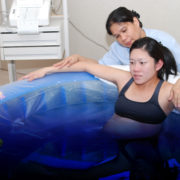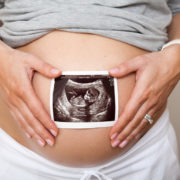Dental Care and Pregnancy
It’s important for you to take good care of your teeth and gums while pregnant. Pregnancy causes hormonal changes that increase the risk of developing gum disease which, in turn, can affect the health of your developing baby.
Pregnancy and dental work questions are common for expecting moms. Preventive dental cleanings and annual exams during pregnancy are not only safe but are recommended. The rise in hormone levels during pregnancy causes the gums to swell, bleed, and trap food causing increased irritation to your gums.
Does regular dental work during pregnancy safe?
Dental work while pregnant, such as cavity fillings and crowns, should be treated to reduce the chance of infection. If dental work is done during pregnancy, the second trimester is ideal. Once you reach the third trimester, it may be very difficult to lie on your back for an extended period of time.
The safest course of action is to postpone all unnecessary dental work until after the birth.
However, sometimes emergency dental work, such as a root canal or tooth extraction, is necessary. Elective treatments, such as teeth whitening and other cosmetic procedures, should be postponed until after the birth. It is best to avoid this dental work while pregnant and avoid exposing the developing baby to any risks, even if they are minimal.
Dental problems that commonly arise during pregnancy include:
- Gingivitis. Thanks to hormonal changes that exaggerate your body’s response to bacteria in your mouth, pregnant women are more likely to develop this mild form of gum disease, which can cause irritation, redness, swelling, bad breath and possible bleeding.
- Cavities. Between the need to up your caloric intake and those intense food cravings, you’re probably doing more snacking these days—which can lead to cavities. If you’re suffering from nausea and vomiting, the increased acidity in your mouth can also lead to tooth decay.
- Gum tumors. If you develop round, red lumps along your gum line, you can chalk them up to hormonal changes and possibly a buildup of plaque. These pregnancy tumors, as they’re known, are rare, but tend to develop during your second trimester and are completely benign, usually fading away after the baby is born.
- Enamel erosion. If your morning sickness is causing you to vomit frequently, the acids can begin to erode your tooth enamel, increasing your risk of tooth decay.
Dental Care While Pregnant
- Tell your dentist (and doctor) if you are pregnant. Routine dental care can be done at any time during pregnancy. Any urgent procedure can be done, as well. All elective dental procedures, however, should be postponed until after the delivery. Before you have your dental appointment, check with your obstetrician to see if she has any special precautions/instructions for you.
- Tell your dentist the names and dosages of all drugs you are taking – including medications and prenatal vitamins prescribed by your doctor – as well as any specific medical advice your doctor has given you. Your dentist may need to alter your dental treatment plan based on this information.
- Dental X-rays can be done during pregnancy. Your dentist will use extreme caution to safeguard you and your babies, such as shielding your abdomen and thyroid. Advances in technology have made X-rays much safer today than in past decades.
- Don’t skip your dental checkup appointment simply because you are pregnant. Now more than any other time, regular periodontal (gum) exams are very important because pregnancy causes hormonal changes that put you at increased risk for periodontal disease and for tender gums that bleed easily – a condition called pregnancy gingivitis. Pay particular attention to any changes in your gums during pregnancy. If tenderness, bleeding or gum swelling occurs at any time during your pregnancy, talk with your dentist or periodontist as soon as possible.
- Follow good oral hygiene practices to prevent and/or reduce oral health problems.
After You’ve Had Your Baby
If you experienced any gum problems during your pregnancy, see your dentist soon after delivery to have your entire mouth examined and periodontal health evaluated.
The information, including but not limited to, text, graphics, images and other material contained on this website are for informational purposes only. The purpose of this website is to promote broad consumer understanding and knowledge of various health topics. It is not intended to be a substitute for professional medical advice, diagnosis or treatment. Always seek the advice of your physician or another qualified healthcare provider with any questions you may have regarding a medical condition or treatment and before undertaking a new health care regimen, and never disregard professional medical advice or delay in seeking it because of something you have read on this website.
Resources:
http://americanpregnancy.org/pregnancy-health/dental-work-and-pregnancy/












